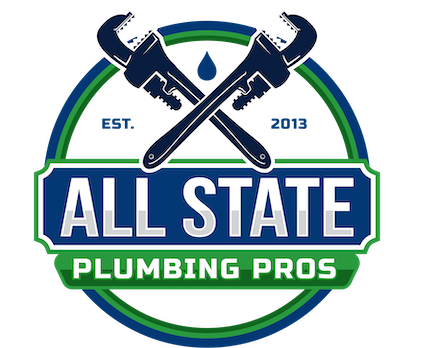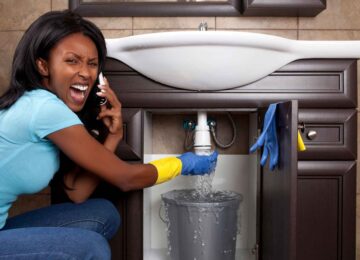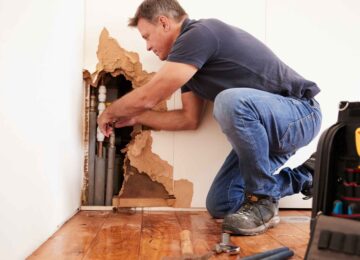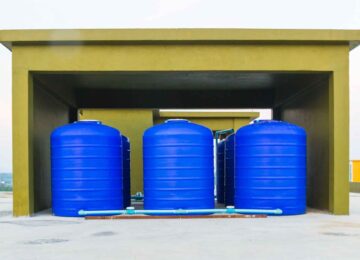Understanding the Issue
Why is my bathtub faucet dripping? It’s a common question homeowners ask when they start noticing an unexpected trickle of water long after the tap has been turned off. A leaking faucet, specifically a dripping bathtub faucet, might seem like a minor annoyance, but over time, it can lead to serious consequences. According to the U.S. Environmental Protection Agency (EPA), a faucet that drips once per second can waste more than 3,000 gallons of water a year, enough to fill more than 40 bathtubs. Beyond wasting water and increasing your utility bill, a leaky faucet can cause mold, structural damage, and even respiratory issues.
It’s also worth noting that constant dripping can gradually reduce water pressure in your bathroom, making showers less effective and impacting other fixtures. That’s why it’s important to understand what’s causing the leak so you can address the issue promptly, as it can save you money, whether that means replacing a worn-out part or calling a professional plumber.
Let’s explore the most common reasons why your bathtub faucet is dripping, how to fix it, and when it’s time to seek expert help.
Common Causes of Leaks
A leaking bathtub faucet can have several underlying causes, most of which relate to worn or damaged internal components. The exact source of the leak often depends on the faucet type (compression, cartridge, or ball-style), age, and water quality in your home.
Here are some of the most common causes of faucet leaks:
- Worn-out or corroded parts: Over time, internal parts like the cartridge, valve seat, or faucet handle may degrade due to age or water corrosion, allowing water to seep through even when the faucet is off.
- Hard water and mineral deposits: In areas with hard water, minerals like calcium and magnesium can build up inside the faucet, damaging components and reducing the seal’s effectiveness.
- Failed shower diverter: If your shower diverter valve fails to close properly, water may continue dripping from the tub spout, even after you’ve turned off the shower.
- Loose pipe connections or mounting hardware: A slow drip can also result from loose internal fittings or faulty installation. These often require accessing the plumbing behind the wall or under the tub.
- Excessive water pressure: When pressure is too high, it can force water past weakened seals or worn-out washers, creating a constant drip and stressing your plumbing system.
If your tub is older or you notice visible corrosion on the handle or spout, chances are the issue stems from deteriorated parts or a failing seal.
DIY Repair and Tools
Many homeowners can tackle a leaking bathtub faucet on their own, especially if the leak is related to a simple part replacement. That said, DIY repairs require careful attention to detail and a few essential tools.
Before starting, always shut off the water supply to the bathroom to avoid unwanted flooding. This usually means turning off the water valves behind an access panel or shutting off the main water line.
Here’s what you’ll typically need for the installation :
- Flathead and Phillips screwdrivers
- Adjustable wrench
- Allen wrench set
- Replacement cartridge, washer, or O-ring
- Plumber’s tape
- Handle puller (optional, for stuck faucet knobs)
- Cleaning supplies like vinegar or CLR to remove mineral buildup
The basic process involves:
- Removing the faucet handle, usually by unscrewing a small cover and loosening a retaining screw.
- Extracting the old cartridge or washer, which may require wiggling or a cartridge-pulling tool.
- Replace the worn parts with identical components from your local hardware store.
- Reassemble the faucet and test the repair by slowly turning the water supply back on and checking for leaks.
If the leak persists, the problem may lie deeper in the plumbing system, or the parts used might not be a proper fit. At that point, it’s best to consult a plumber.
Prevention and Maintenance
Prevention is always easier and cheaper than repair. Simple maintenance habits can help extend the life of your bathtub faucet and prevent leaks before they start.
Here are proactive steps you can take:
- Inspect faucet components regularly. Check for signs of corrosion, wear, or stiffness in handles and diverters.
- Clean mineral deposits every few months using a gentle vinegar solution or descaling agent. This helps keep water flow steady and parts in good shape.
- Install a water softener if you live in a hard water region. This reduces mineral buildup in your faucet and pipes.
- Monitor water pressure in your home. If it consistently exceeds 80 psi, consider installing a pressure-reducing valve.
- Replace aging parts proactively. Cartridges and washers don’t last forever, even if the faucet isn’t leaking yet.
Additionally, scheduling an annual plumbing inspection for your leaking bathtub faucet with a licensed plumber can help catch hidden issues like hairline cracks in pipes or poorly sealed connections before they lead to drips and water damage.
Professional Help
If you’ve tried a DIY fix and the leak persists, or if you’re unsure where the problem lies, don’t hesitate to call a professional plumber. Some plumbing issues are more complex than they seem and can worsen with improper handling.
Plumbers bring diagnostic tools and expertise to the table. They can:
- Accurately identify the root cause of the leak
- Perform safe and lasting cartridge or valve replacements
- Replace a damaged shower diverter
- Repair leaks behind the wall or within the plumbing line
Choosing the right plumber matters. Look for someone who is licensed, insured, and has a proven track record of exceptional service. You can also ask about warranties on repairs, availability for emergency service, and transparency in pricing.
Sometimes what looks like a small issue on the surface is a sign of a larger plumbing problem. When in doubt, bring in a professional to avoid making a costly mistake.
Conclusion
A dripping bathtub faucet is more than just an inconvenience; it prompts the question, Why is my bathtub faucet dripping, and it’s a warning sign. Whether caused by a worn cartridge, a corroded valve, or a pressure issue, leaks should be addressed promptly to prevent waste, damage, and costly repairs. Fixing the problem early, either through a simple DIY approach or with the help of a professional, can restore your faucet’s performance and protect your home’s plumbing system. With routine maintenance and awareness, you can keep your bathroom leak-free and efficient for years to come.
If you’re tired of dealing with a dripping bathtub faucet or unsure what’s causing the leak, don’t wait. The licensed professionals at All State Plumbing Pros are ready to help with expert diagnosis and fast, reliable repairs. Contact us today to schedule a visit and get your plumbing back in top shape.
FAQs
How do I stop my bathtub faucet from dripping?
To stop your bathtub faucet from dripping, start by shutting off the water supply. Then, disassemble the faucet to access and replace the worn cartridge, washer, or O-ring. If the leak continues after replacing parts, it may be best to consult a plumber.
Is a leaky bathtub faucet an emergency?
While not always an emergency, a leaky faucet should still be taken seriously. Over time, it can waste thousands of gallons of water and may indicate deeper issues in your plumbing system. If the drip worsens or causes water damage, call a plumber.
Why is my tub spout dripping when the water is off?
This usually happens due to a faulty cartridge or a broken shower diverter valve. These parts may not fully seal the water flow, allowing it to leak through the tub spout even when the faucet is off. Replacing the damaged part typically solves the issue.
What is the most common cause of a leaky tub faucet?
The most common cause is a worn-out cartridge or washer inside the faucet. Over time, these components degrade due to regular use, mineral deposits, or water pressure issues, eventually allowing water to seep through when the faucet is turned off.

![Why Is My Bathtub Faucet Dripping? Top Causes & Easy Fixes Understanding the Issue Why is my bathtub faucet dripping? It’s a common question homeowners ask when they start noticing an unexpected trickle of water long after the tap has been turned off. A leaking faucet, specifically a dripping bathtub faucet, might seem like a minor annoyance, but over time, it can lead to serious consequences. […]](https://allstateplumbingct.com/wp-content/uploads/2025/07/Why-Is-My-Bathtub-Faucet-Dripping-Top-Causes-Easy-Fixes-750x420.jpg)



Leave a Reply